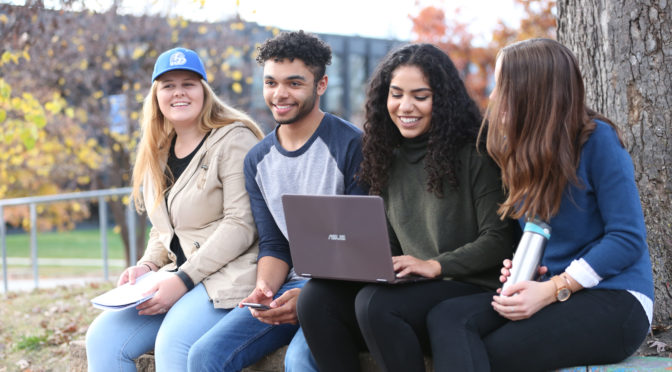Welcome back for the 2018-2019 school year. As a reminder, if you have purchased a Drake Parking Permit for the 2018-2019 school year or would like to do so, you can pick them up in the Student Services Center (SSC) starting Aug. 1. The SSC is temporarily located in the lower level of Hubbell and is open Monday—Friday from 8 a.m. to 4:30 p.m. during the summer.
To help you become familiar with Drake’s parking regulations, below are answers to six of the most frequently asked questions. For detailed information on parking regulations, visit the Public Safety web page.
Parking Regulations Overview: Vehicles may only be parked in clearly designated, legal parking spaces. Areas posted with signs restricting parking (handicap, service vehicles, loading zones, fire lanes, etc.) must be observed and complied with. Parking in any travel lane, taking more than one parking space, blocking another vehicle, or parking on the lawn are all prohibited. Vehicles are prohibited from all lawns, except when specifically authorized. Driving or parking on sidewalks or pedestrian ways is strictly prohibited.
When can I park for free on Campus? Parking regulations are in effect year-round, including breaks in the academic calendar.
How many cars can I register? All students, faculty, and staff may register up to two vehicles to park on campus. Only one vehicle may park on campus at a time with the valid parking permit.
If I have a commuter permit can I park in a residential lot? Commuter Permits are only valid in commuter lots. For convenience, they are also allowed in Residential lots 18N and 24 from 6 a.m. to 2 a.m. There is no overnight parking in commuter lots.
If I have someone visiting, can they get a short term permit to park on campus? Yes, visitors may purchase daily permits.
Does Drake tow cars from lots? Drake reserves the right to tow illegally parked cars, cars without permits in Drake owned lots, or cars with multiple unpaid parking citations.
How can I appeal a ticket? You can appeal a ticket online or by stopping into the Public Safety office.
Scott Law, Public Safety & Operational Services

